A tree pruning row has exploded in Waltham Forest, with frustrated families accusing the local council of making ‘brutal and inexplicable’ branch trims.
Under a process known as pollarding, London‘s Waltham Forest Council are cutting the leaves and branches off several trees in a desperate bid to help maintain their health and growth.
But locals have expressed their fury at the decision, arguing that the streets have become lined with unattractive ‘bare stumps’, while others raised concerns regarding the lack of shade during the hot summer months.
Describing the decision to prune the trees as ‘unnecessary’, local resident Emma Woodcock told the Local Democracy Reporting Service: ‘It just feels really brutal and unnecessary. Looking at a tree gives me a sense of joy.
‘Looking at a stumpy old branch is fine in winter.’
Ms Woodcock also alleged that residents had not been consulted by their local councillors regarding the decision.
Meanwhile, Melissa Nisbett, who lives nearby, argued that the trimming of branches during a heatwave was both ‘inexplicable’ and ‘pretty appalling’.
England experienced its hottest spring on record from March to May, and the driest in over a century.
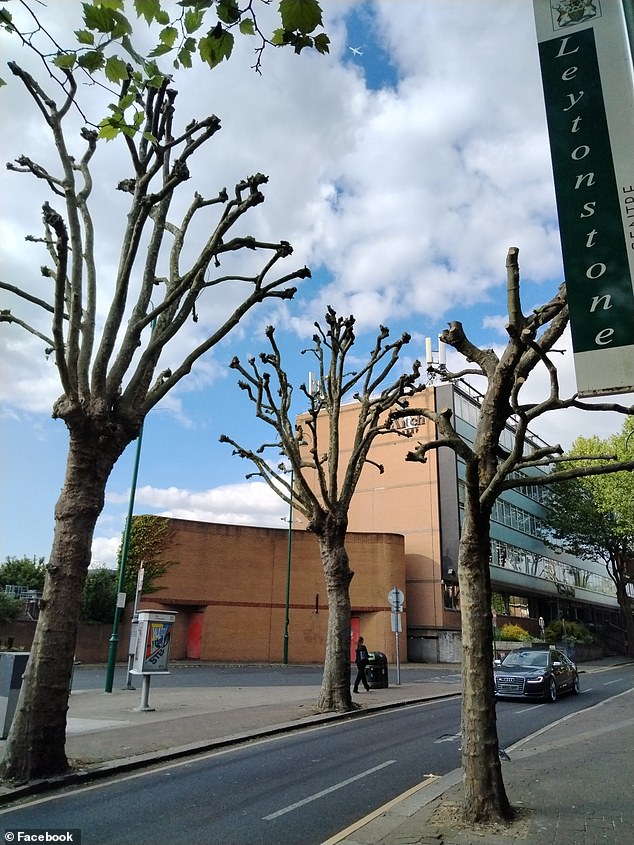
Under a process known as pollarding, London’s Waltham Forest Council are cutting the leaves and branches off several trees in a desperate bid to help maintain their health and growth. Pictured: some of the controversial pruned trees located in Waltham Forest
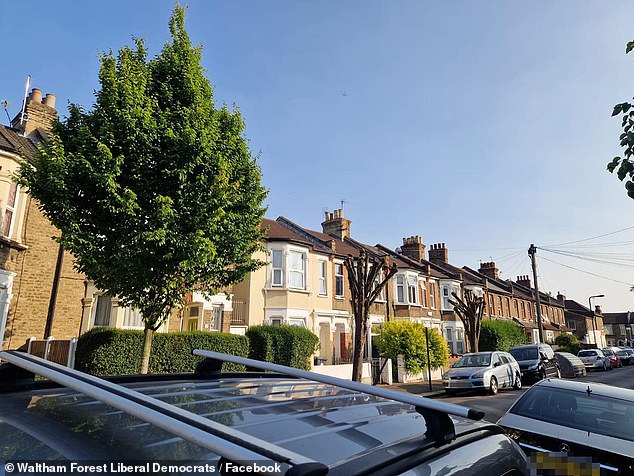
But locals have expressed their fury at the decision, arguing that the streets (pictured) have become lined with unattractive ‘bare stumps’, while others raised concerns regarding the lack of shade during the hot summer months
This was then followed by the hottest June on record, then two heatwaves in the second part of the month and into July.
Arguing that the council work should have taken place during the winter months in order to avoid ‘direct hot sunlight’ entering individuals’ homes, she added: ‘The community should have access to shade and somewhere to stand waiting for a bus or sit under in a park.’
Ms Nisbett also raised concern about the detrimental impact the pruning could have on the health of trees.
The Royal Horticultural Society (RHS), the UK’s leading gardening charity, recommends late winter as the best time of year for pollarding, with autumn the least favourable period due to the possibility of decay fungi entering the pruning cuts.
While the pruning of trees can take place in the summer months, the warmer weather and ongoing exposure to the heat can hinder regrowth and also increase the risk of disease.
In the most severe instances, trees could even be at risk of death.
RHS add that new growth during these months ‘may be poor as a result of the scorch, drought or heavy shade cast by neighbouring trees’.
Local allotment keeper Victoria Dove, said that the ‘bald’ trees ‘negates all the hard work’ local residents had put in to supporting wildlife.
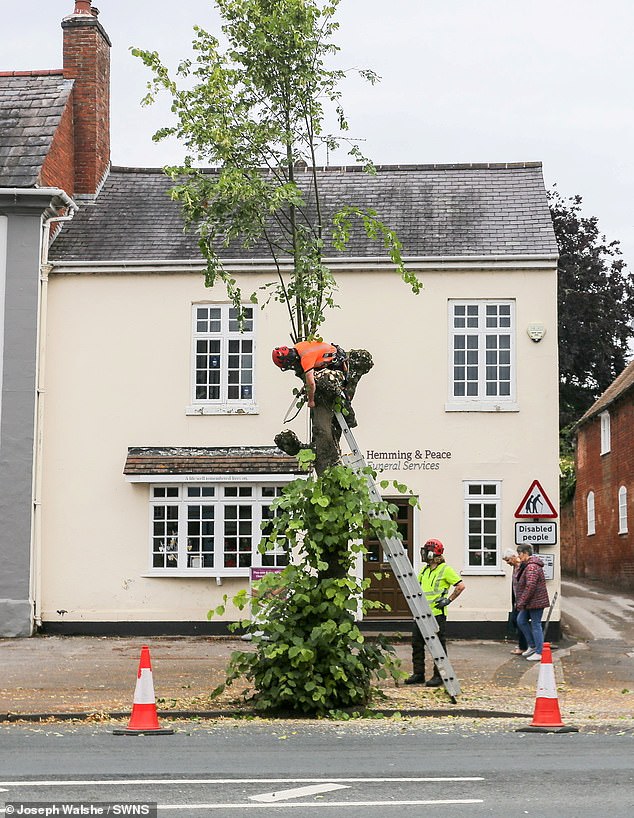
In July last year, a row of historic trees in the market town of Henley-in-Arden, Warwickshire (pictured), were sawn off without warning, with residents accusing Warwickshire County Council of vandalising the trees and ruining the town with its ‘extreme’ pruning
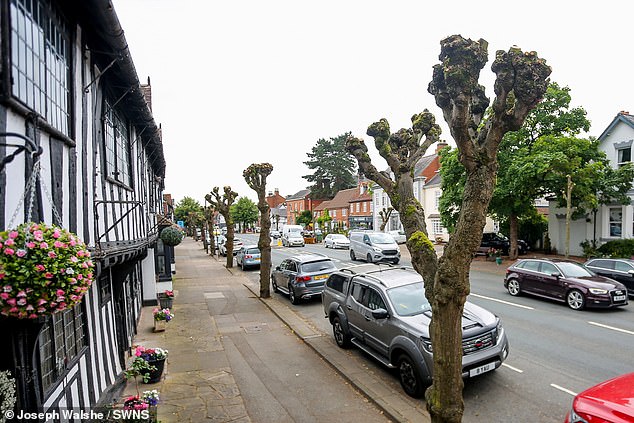
The Royal Horticultural Society (RHS), the UK’s leading gardening charity, recommends late winter as the best time of year for pollarding, with autumn the least favourable period due to the possibility of decay fungi entering the pruning cuts. Pictured: Henley-in-Arden high street
However, Waltham Forest Council insist that the pruning is ‘adding’ to the already 55,000 trees in the London borough.
The pollarding operation is also said to be in compliance with the Countryside and Wildlife Act of 1981, which seeks to protect wildlife that could be impacted, particularly nesting birds.
Clyde Loakes, Deputy Leader and Cabinet Member for Climate and Air Quality, insisted that the council ‘share residents’ love of trees and recognise the range of benefits they bring to local people and wildlife’.
He added: ‘While pruning, which we carry out once every four years where necessary, may result in a temporary reduction in shade and habitat, it is essential to keep the tree in a safe condition and promote growth
‘Contrary to popular belief, this act does not prevent works on trees during certain months of the year but instead insists on extra stringent criteria and responsibilities on those undertaking the work, including checks for active nesting birds and other wildlife.
‘Our current approach has been successfully used for the last 15 years. It is shaped and undertaken by Arboricultural experts and professionals and is in line with the approach of local councils in London and beyond.’
Cllr Loakes also said that crews will not carry out work in the instance that a nest is discovered.
In July last year, a row of historic trees in the market town of Henley-in-Arden, Warwickshire, were sawn off without warning, with residents accusing Warwickshire County Council of vandalising the trees and ruining the town with its ‘extreme’ pruning.
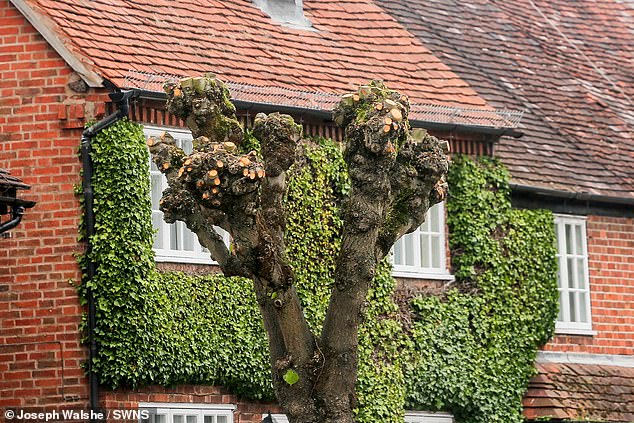
Clyde Loakes, Deputy Leader and Cabinet Member for Climate and Air Quality, insisted that Waltham Forest council ‘share residents’ love of trees and recognise the range of benefits they bring to local people and wildlife’. Pictured: trees that have been pruned in Henley-in-Arden
The much-loved trees had been a draw for tourists, but locals feared that they would now stay away as ‘who wants to take a selfie next to an ugly stump?’.
But the local authority said it had been alerted by residents and businesses that the trees were coming into contact with buildings and hanging low over the footpath.
In a statement, the council said it usually cuts down the trees later in the year as part of its cyclical pollarding works but decided to hack them down now rather than carry out ‘remedial pruning works’ as it has a ‘very limited budget’.
Business owner Amy Graham, 45, who runs a florist in the town, said: ‘Everyone was gutted when they saw the trees had been hacked down to their stumps.
‘We all understand the need for pruning but this was extreme and done, supposedly, to save a few quid because the council didn’t want to pay to have it done now and then again in the winter.’
Warwickshire Council Council said the trees have been pollarded, which involves removing the upper branches of a tree, aiming to promote the growth of a dense head of foliage and branches.












